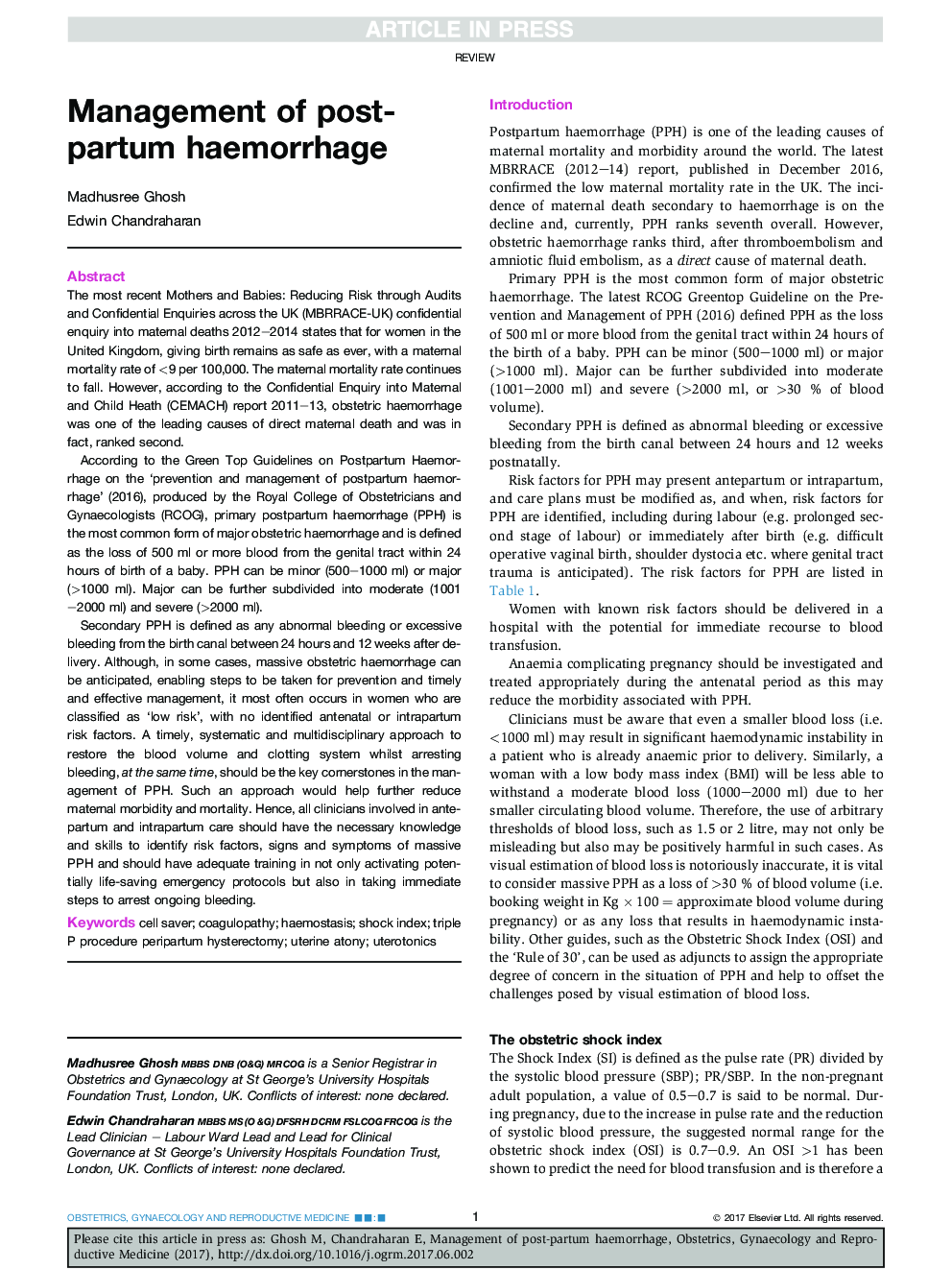| Article ID | Journal | Published Year | Pages | File Type |
|---|---|---|---|---|
| 8783465 | Obstetrics, Gynaecology & Reproductive Medicine | 2017 | 6 Pages |
Abstract
Secondary PPH is defined as any abnormal bleeding or excessive bleeding from the birth canal between 24 hours and 12 weeks after delivery. Although, in some cases, massive obstetric haemorrhage can be anticipated, enabling steps to be taken for prevention and timely and effective management, it most often occurs in women who are classified as 'low risk', with no identified antenatal or intrapartum risk factors. A timely, systematic and multidisciplinary approach to restore the blood volume and clotting system whilst arresting bleeding, at the same time, should be the key cornerstones in the management of PPH. Such an approach would help further reduce maternal morbidity and mortality. Hence, all clinicians involved in antepartum and intrapartum care should have the necessary knowledge and skills to identify risk factors, signs and symptoms of massive PPH and should have adequate training in not only activating potentially life-saving emergency protocols but also in taking immediate steps to arrest ongoing bleeding.
Related Topics
Health Sciences
Medicine and Dentistry
Obstetrics, Gynecology and Women's Health
Authors
Madhusree Ghosh, Edwin Chandraharan,
